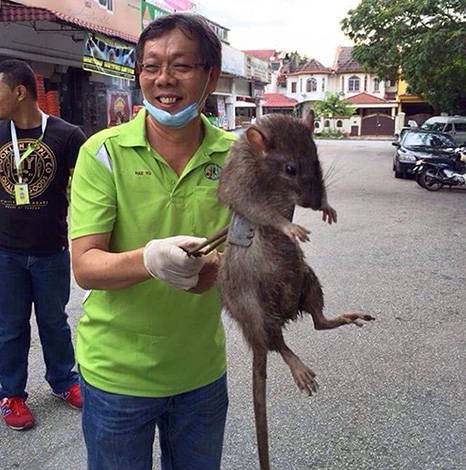
Next you will learn:
- Which rat is officially recognized as the largest in the world and what it looks like;
- To what sizes can city rats grow and whether there are huge monsters among them;
- Are there giant mutant sewer rats and can they attack humans?
- How big can domestic rats be (decorative) and what is useful to know about those representatives who weigh about half a kilogram;
- What kind of animals are sometimes mistaken for giant rats ...
Plots about giant mutant rats confidently occupy the first places among urban horror story legends in popularity, and various works of art actively exploit such images. Indeed, the nerves can tickle the reader only with the thought that somewhere in the sewage collector huge rats with red eyes and yellow teeth are wandering, always hungry, cunning, able to get out of their sewer monastery sooner or later and go in search of a victim.
And when the same person finds out that the largest rat in the world can be compared with a dog in size, he becomes even stronger in his fears.
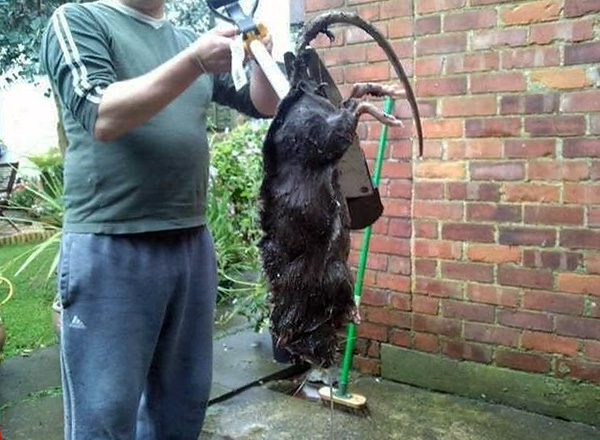
Indeed, the largest rat known to science may well pass for a monster that has descended from the pages of a third-rate horror story. But ... only outwardly. The fact is that such giants of the rat world do not pose a real danger to humans, because their character is quite peaceful.
Which rat is officially considered the largest in the world?
The photo below shows the largest rat in the world:

It is called the Bosavi woolly rat, although the name is temporary, and is not currently approved as a scientific one.
The animal in the photo (the tongue will not turn it into a beast) has a body length from the tip of the nose to the base of the tail 82 cm and weighs about 1.5 kg. Outwardly, this is a typical rat, even the color of the fur and the “expression” of the muzzle is the same as that of her relatives from the city cellars. Nevertheless, in its dimensions and weight, the Bosavi woolly rat is at least three times the size of its largest city counterparts.

Bosawi rats are completely not aggressive towards humans and are not afraid of him: a wild animal can be stroked, a rat will not run away and will not try to bite. At least no zoologist was injured during the inspection, weighing and measurement of these rodents in their natural habitat. Such a calm attitude to humans is associated with the remoteness of the habitat of a woolly rat: so far, representatives of the species have been found only in a crater completely cut off from civilization, long extinct and overgrown with rainforest, Bosavi volcano in Papua New Guinea. Not meeting people here, rats do not know that they need to be afraid.
On a note
At the end of the article, you can watch a video from the BBC expedition, during which these giant rodents were discovered. It shows that the wild rat surrounded by zoologists is not at all worried, does not show aggression towards people and is engaged in its usual activities.
By the way, the same credulity is characteristic of other inhabitants of Bosavi crater. For example, for a new species of wood kangaroo discovered here. This animal also calmly allows itself to be stroked.
Today, Bosavi rats are not known to be found in any other places in the world, and most likely, apart from the deserted crater of the volcano in Papua New Guinea, they are not found anywhere else in the world. To meet such a beast in a garbage dump somewhere in Russia or in Europe will definitely not work. Here you can catch the eye only gray or black rats eaten off on the garbage - indispensable companions of our civilization.
How big are sewer rats and are there giant mutants among them?
In Russia, next to a man, in the attics, in the basements and in the sewerage of his houses, two types of rats settle - gray (pasyuk) and black. They are similar to each other, but gray is larger: the body length of adults of this species can reach 25 cm (excluding tail length), and weight - 400 grams. However, even to the size of a cat, gray rats usually do not grow.
In the photo below - a gray rat:
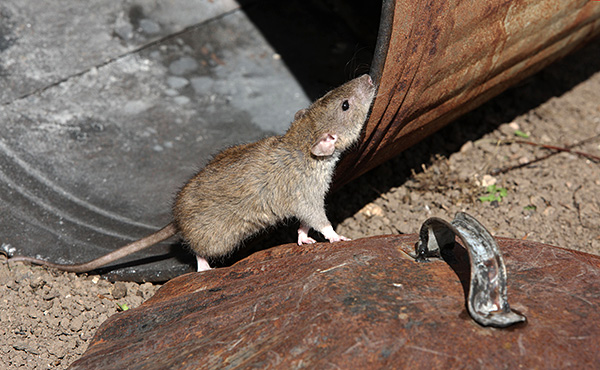
And here is black:
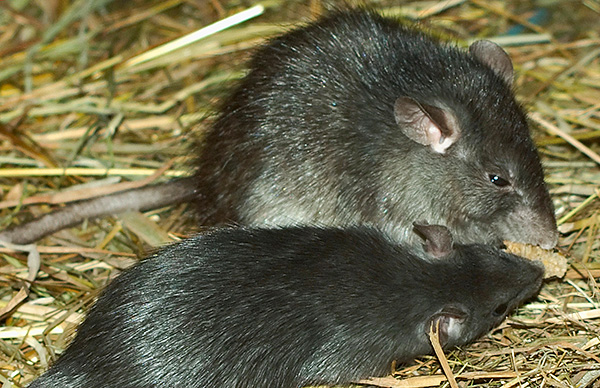
Black rats are smaller than gray: the largest individuals of this species reach a length of 22 cm from the tip of the nose to the base of the tail, and their weight rarely reaches 300 grams.
The pasuk, the larger one, is precisely the very draining (“sewer”) rat that willingly populates collectors, moist basements and basement floors. The black rat prefers to settle in dry rooms and in attics. Other rat species have never been found in the Russian urban jungle, and the stories that huge rats the size of a dog live in the Moscow metro are just rumors that have not been confirmed yet (however, we’ll talk about huge “mutant rats” below )
Anyway, the biggest rat in Russia is the same pasuk. The fact is that all representatives of the rat genus are thermophilic, in a temperate or cold climate they can live only next to humans. In the wild in the south of our country only black rats live, inferior to gray in size, and larger species are known only from tropical regions. That is, even in the Siberian wilderness or in the endless steppes of southern Russia, huge rats are not found.
More on huge mutant rats
Nevertheless, the stories of giant mutant rats in the Moscow metro or in abandoned military bunkers remain surprisingly tenacious. Their phenomenon is easy to explain: people do not want to put up with the dullness of their everyday life and are willing to believe in almost any unusual and inexplicable phenomena, even if they are frightening. After all, these “horror stories” give hope that the world around is not as ordinary and dull as it seems most of the time, and there is certainly a place in it for certain riddles - including mutant rats.

Simply put, people want to believe in the existence of monster rats, and science fiction writers, horror film directors and rumors-mongers simply exploit these fears for their own benefit. As a result, more and more new versions of “facts” and “eyewitness accounts” appear constantly, and the old ones are repeatedly changed and transformed into more and more new options, sometimes not at all similar to the originals.
For example, the stories allegedly told by the Moscow metro drivers are very famous. According to them, in the farthest sections of the tunnels, huge rats the size of a dog from time to time get into the headlights of trains and cross paths. Most of these stories are full of chilling details: in the brief moment that a ray of light snatches a rat out of the darkness of the tunnel, the animal manages to look at the driver with evil green (in other versions, red) eyes, and then news suddenly appears that these animals not a single poison acts. It is not known which of the drivers tried to poison these mutants (just as the names of those who, in fact, saw these animals are not known), but most storytellers consider it their duty to mention such immunity.

The allegedly real story that happened to a group of Moscow diggers (specialists studying caves and artificial underground tunnels) is also popular. In the collector under the zoo, five large rats the size of a dog attacked this team, and the guys survived only by throwing their crowbars into the animals and scaring them off in this way.
This story was continued. They say that an anonymous club later called the digger club, reporting that there are a lot of large rats in secret bunkers for storing radioactive waste. It is well known that the more secrecy and conspiracy theories are in the bike, the more popularity awaits it ...
Also, people circulate stories of giant rats, climbing out of hatches near dumps and dispersing dogs here. Moreover, these stories are unusually tenacious: the first reports of such rats appeared back in 1989, and after that their number only increased.
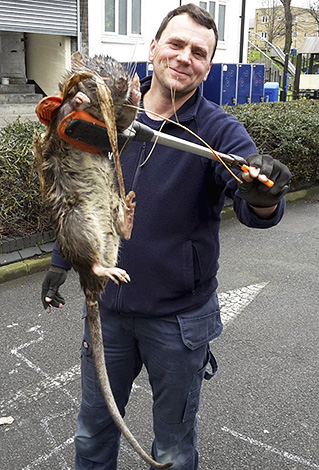
It is interesting to note that the less plausible each particular story is, the easier it is spread among the people. It is the details that seem fantastic that make such bikes “hot”: either huge rats create complex organizations with commanders, pioneers and suicide bombers, or they deliberately feed on poisons or winding wires - you can’t count such details.
Someone even tries to interfere in one heap and rumors about mutant rats, and news about the discovery of woolly rats Bosavi. The result is a mix unimaginable for a specialist that, they say, scientists discovered in the Moscow subway a new type of giant rat - Indonesian. Why Indonesian? Yes, simply because such a name is simpler than "woolly rat Bosawi" or "rat from Papua New Guinea."
We will not waste time refuting such speculations, but only say that none of these rumors has actual evidence.
Half a kilogram of domestic rats - reality
Like basements, decorative domestic rats usually do not grow to the size of cats and dogs. The fact is that such pets are ordinary gray rats, which, through long selection, managed to achieve a beautiful color or consolidation of albinism in the genotype.
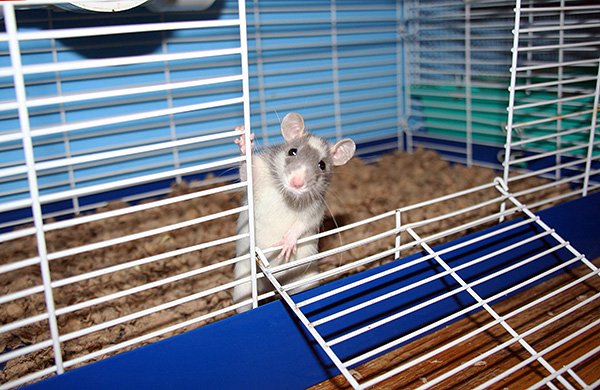
But breeders did not work on increasing the size of domesticated rats - there was simply no special need for this. Still, rats are not cattle, no one grows them for meat, and therefore no one needs to bring out giants from them like huge rabbits or cows.
As a result, in captivity, rats grow to about the same size as in a basement or wildlife. But it should be recognized: in cells, in conditions of lack of physical activity and an abundance of food, many of them eat away and grow fat. As a result, individual instances of pets sometimes reach a weight of 500 grams or more.

However, there is no reason to say that they are giants (in terms of genes). Their maximum size is the same as that of half-wild relatives, but weight is just a gain. It’s just “fat men”, the same as individual representatives of the human race, weighing 300-350 kg and not at all “giants”.
Therefore, remember: both white rats, and original “huskies" or naked rodents in an adult state are approximately the same in size, and they are not very large. Find and buy somewhere a huge rat weighing a kilogram does not work.
In the photo - a large male white laboratory rat:
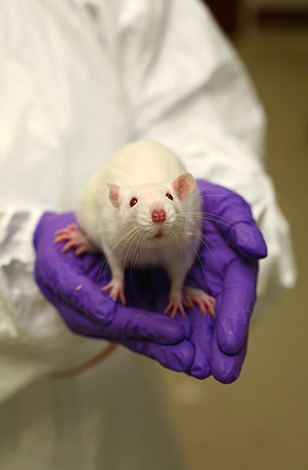
And, by the way, pest rats in the basement or in the chicken coop have normal sizes for their kind, and conventional means are used to combat them. The rat trap for them is a crush of standard "rat" dimensions, or a live trap, designed specifically for rats. Even if a very large specimen falls into the trap, it will have enough stock in size to kill or hold the prey.
Other large rat species
In general, the Bosavi woolly rat is among the largest rats of the genus Rattus the largest and practically unrivaled. Animals of similar sizes and similar to rats are in reality not rats, and the corresponding names are only given by external resemblance.
For example, the so-called Nezomyids, a family of rodents common in Africa, are similar to rats. Among them there is a Gambian marsupial rat (it is also a giant marsupial), the body length of individual representatives of this species can reach up to 90 cm, but because of their harmony and mobility they weigh a maximum of 1.2-1.4 kg.
The giant marsupial rat is shown below in the photo:

This species is known, first of all, not for its size, but for serving people - thanks to the delicate scent of Gambian marsupial rats they are used to search for and neutralize mines. The preparation and training of one such “animal-specialist” is several times cheaper than the training of a sapper dog, with the same work efficiency.

It is interesting
African marsupial rats got their name for bulky cheek pouches. In these bags they carry food, like hamsters do. These rats do not belong to true marsupial animals and do not have bags for carrying offspring.
Other examples of large, but not real rats are:
- Big reed rat. This animal also lives in Africa, has a very dense physique, reaches a length of 61 cm, and individual adult males can weigh up to 9 kg. In the photo below you can estimate the size of the representative of this species:

- Big bamboo rat, the hero of the replicated Internet news that "a giant rat is caught in China." It lives in SEA, including China, reaches a length of 50 cm and a weight of 4 kg. The photo below is an illustration of a typical "yellow" news:

However, in reality, from rats these animals have only a name. With real rats, representatives of the genus Rattus, they are related to the same extent as baboons are related to humans.
It is just as incorrect to compare representatives of these species with pasukas as, for example, nutria - the latter are also very large, belong to the rodent family and resemble rats in appearance. But it doesn’t occur to anyone to spread the news on the Internet that, they say, a giant mutant rat was caught in Azerbaijan and confirmed with a photograph of a farmer with nutria mined at the stake.
But since we were talking about large relatives of rats, it would be fair to mention the largest rodents in the world. Moreover, to one extent or another, these animals really look like gray basement pests ...
Animals similar to big rats
With a big stretch, almost any rodent can be called a rat. Moreover, the structural features of most representatives of this family are similar, and something “rat” is guessed in the appearance of them all. Therefore, animals similar to a large rat can belong to a variety of species.
For example:
- Capybara is the largest rodent in the world. At first glance, it can be mistaken for a cross between a rat, a dog and a wild boar. The body length of an adult capybara can reach 1.35 m, the height at the withers - 60 cm, and weight - 65 kg (in some individuals - up to 91 kg). Look at the photo and say that the "rat" is in the guise of this creature:

- Beaver is the second largest and most rodent rodent in the world, whose mass can reach 32 kg;

- Nutria, reaching a length of 60 cm and a weight of 12 kg. This animal is especially similar to the big rat with its teeth the color of gold;

- Marmot-baibak, reaching a length of 70 cm and by the end of summer, before hibernation, walks up to 10 kg.

Interestingly, a giant beaver Castoroides ohioensis lived in the Pleistocene on the territory of North America, whose body length reached 2.75 m, and weight - 350 kg. The largest extinct rodent Josephoartigasia monesi allegedly weighed up to 1.5 tons.
It is also believed that some predatory mammals are similar to large rats, although they have a fluffy tail. This similarity is often used in matters for various intellectual games, meaning mongooses. In fact, common external features of mongooses and rats can be found, but it is almost impossible to confuse these animals with each other.
Mongoose photo:
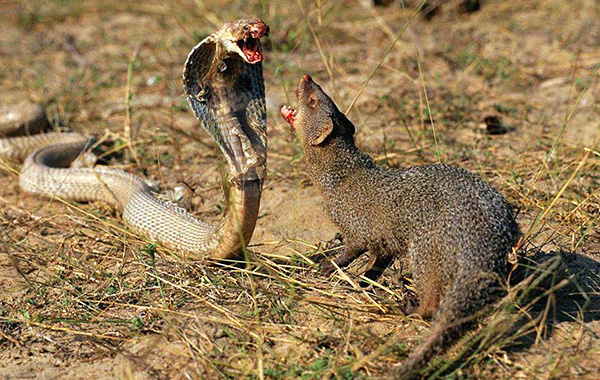
Agree, it would be strange to take him for a rat ...
Giant Afghan and Pakistani rats are also legend ...
And another legend, very famous in the past, but today somewhat forgotten, is associated with supposedly large rats from Afghanistan. The essence of the story is this: in 1980-1990, in the era of shuttles and the fashion for exotic, smooth-haired dachshunds became very popular in Russia. And supposedly in some owners these dogs behaved completely uncharacteristic of the breed.
After inspection by veterinarians or dog handlers, it turned out that sometimes, under the guise of dachshunds, special, very large Afghan and Pakistani rats were sold to wealthy buyers. Say, these rodents were with big ears, and the size just looked like a small dog. But the main intrigue of these tales was that such pets had an unpredictable character and could unexpectedly attack their own owners.
In fact, this story is nothing more than an urban myth. The same rats live in Afghanistan and Pakistan as in Russia, and science does not know such a rodent that can be confused with a dog.
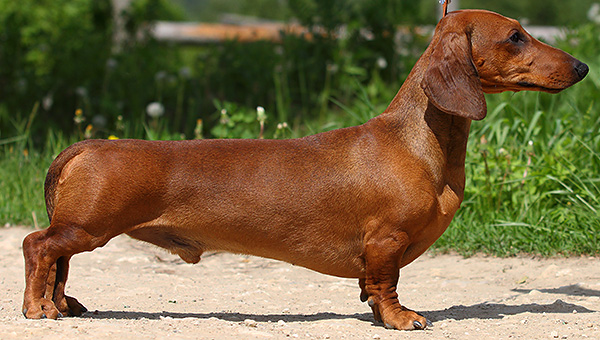
Perhaps the main conclusion that can be drawn from our entire story: you should not be afraid of some huge mutant rats. Those rodents that can be found near human housing, usually do not reach large sizes. They certainly will not attack the person with the goal of biting or snatching a piece of his flesh.
Yes, rats sometimes bite people, but they do it very rarely, mainly in self-defense. Indeed, large rats are rare and very peaceful, to see them is a real success for the zoologist and an almost impossible task for a simple city dweller. Therefore, you can sleep peacefully, giant rats from the sewer do not threaten us.
An interesting video: a cat against a huge rat - who is who? ..
Giant Rat Hunt in Africa

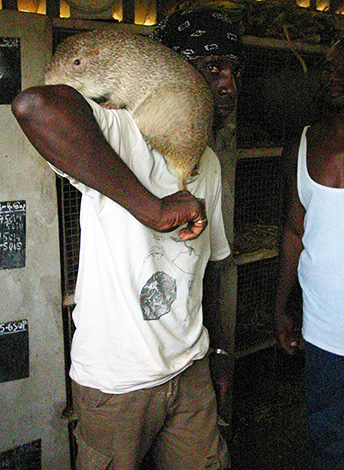
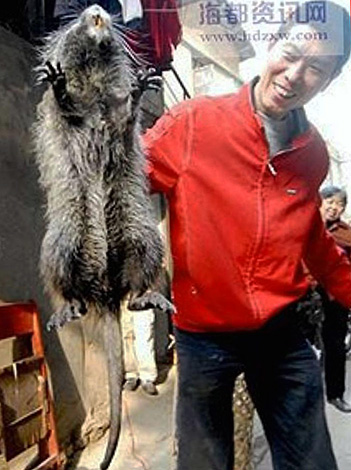


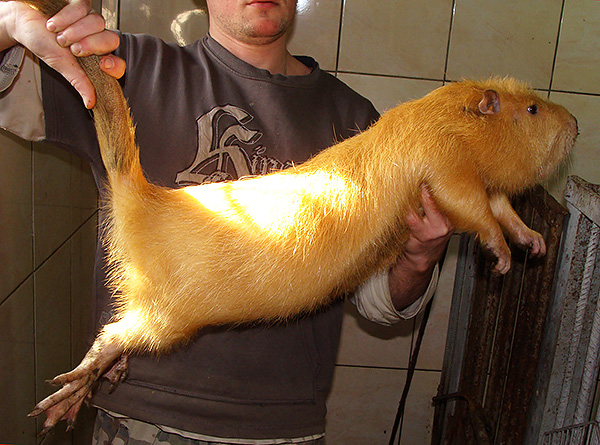
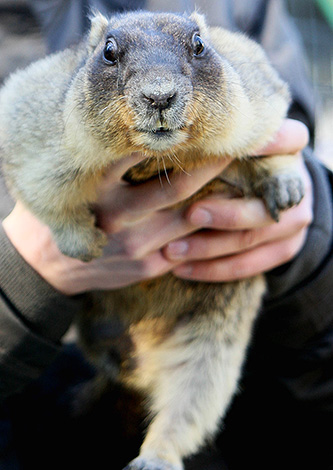



They are not ugly, but charming. In general, all a pleasant viewing)
Not at all charming))
They are paws. We look at the site and compare it with our rat. And they are not scary, we even felt sorry for the rat that the cat was fighting.
Well, well, they feel sorry for the rat, not the cat. You would have more of these rats in the house. A rat is a creature that carries infection. Which one - choose: tularemia or typhoid, rabies, leptospirosis ... Or it will attack you and bite your ears. You don’t even understand what you are saying. Rats were attacked by paralyzed people, bitten to blood. Do you think she’s not attacking you in a dark alley? Where is all your love going then. You are clearly from another planet. Man and rat are two big differences, she won’t ask what you want. Or she is you, or you are her. Poor cat.
Well, you don’t understand anything at all ...
Yeah, sorry for the cat, but not for the rat? Here Valenin understands that both this and that are a pity.